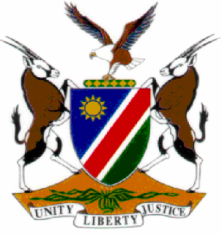
CASE NO.: CC 11/2010
IN THE HIGH COURT OF NAMIBIA
HELD AT OSHAKATI
In the matter between:
THE STATE
and
ABISAI NDAUMBWA ACCUSED
CORAM: Tommasi J
Heard on: 19 January – 27 January 2012
Delivered on: 2 February 2012
RULING – TRIAL-WITHIN-A-TRIAL
TOMMASI J: [1] The accused herein was charged in the main trial with murder; housebreaking with intent to rob with aggravating circumstances as defined in section 1 of Act 51 of 1977 and robbery with aggravating circumstances as defined in section 1 of Act 51 of 1977. The State applied to hand in the warning statement; a confession; the record of the proceedings in terms of section 119 of the CPA1 in the district court; to lead evidence of pointing out by the accused; and admissions made by the accused. The defense objected to the admissibility of the evidence.
[2] The accused disputed the fact that he pointed out any items. This ground is based on a factual dispute which should be dealt with in the main trial. The accused however also challenged the admissibility of the evidence on the ground that same was not made freely and voluntarily and that his constitutional rights were infringed. Counsel for the State submitted in argument that due to the fact that the Court did not allow the leading of the evidence on the disputed fact or allowed cross-examination of the accused in this respect, it was unable to test the credibility of the accused on his allegation that he did not point out anything.
[3] After much deliberation the Court concluded that justice dictates that the State be afforded the opportunity to lead evidence on the factual dispute i.e the contents of the pointing out and to first adjudicate the factual dispute. The outcome of this dispute would determine whether the Court have to re-visit the admissibility of the evidence. The Court thus would allow the State to lead evidence on the disputed pointing out and reserves it ruling on the admissibility of this evidence in its judgment in the main trial.
[4] No evidence was led on any admissions made admissions and the Court is therefore unable to give a ruling in respect hereof as well. The accused is at liberty to object to the admissibility of such admissions made as and when this evidence is led.
[5] It is the ruling of this Court that the confession and the record of the proceedings in terms of section 119 of the Criminal Procedure Act be admitted into evidence, reasons to follow.
[6] The State abandoned their application to have the warning statement admitted in to evidence and under these circumstances no ruling is made in respect hereof.
[7] In the premises the following order is made:
The State is allowed to lead evidence of the pointing out and admissions;
The confession and the record of the proceedings in terms of section 119 of Act 51 of 1977 is declared admissible as evidence in the main trial.
________________________
Tommasi J
1 Criminal Procedure Act, 51 of 1977